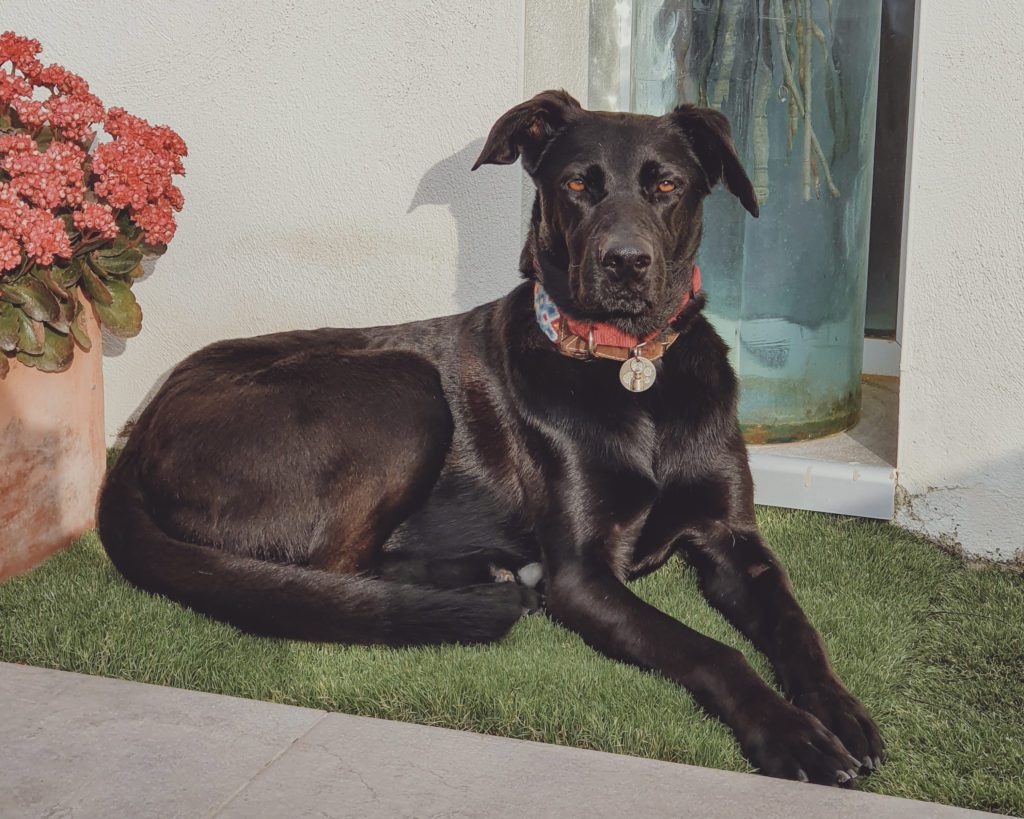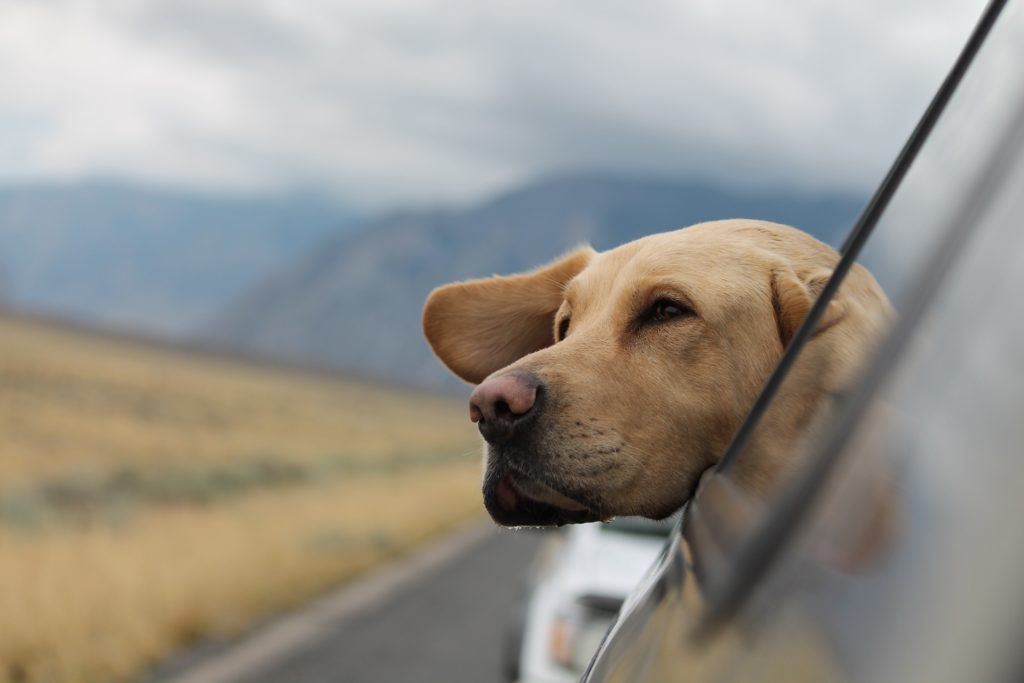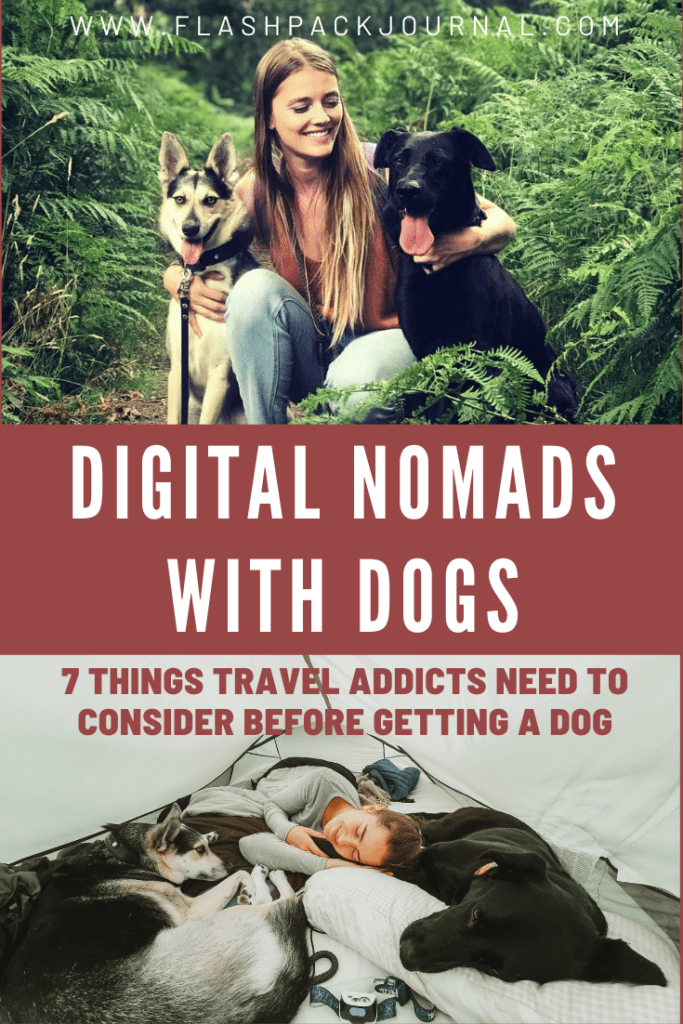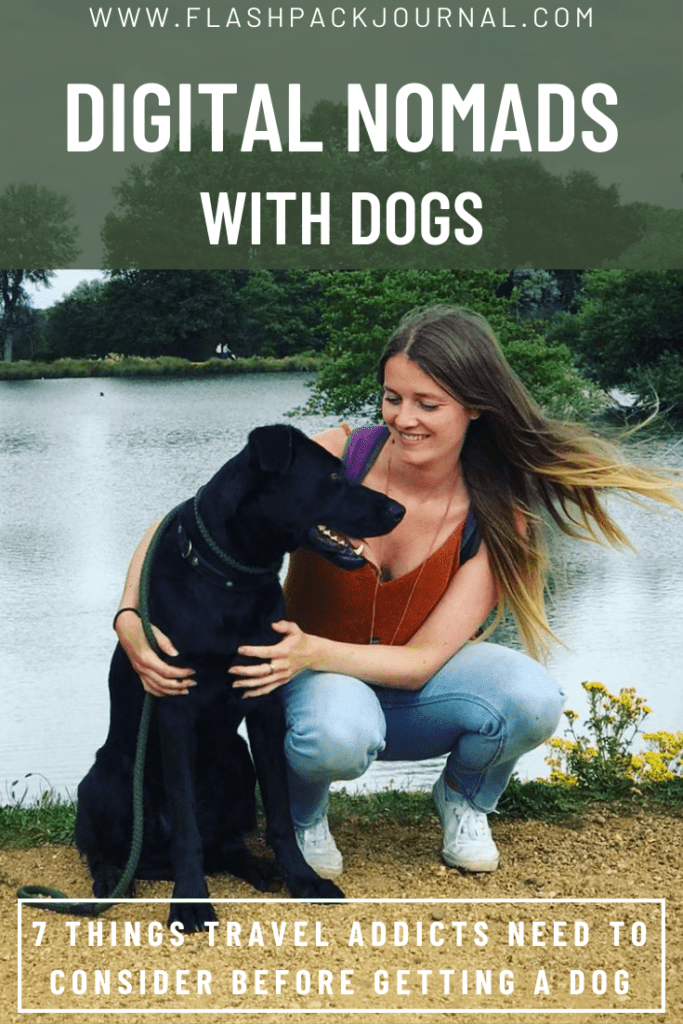Digital nomad with dog - 7 things travel Addicts should know before getting a dog
Table of Contents
A Brief History of Humans and Dogs
I have accepted the fact that I will always be a little bit of a nomad. Some people just are and that’s ok. In the end it’s human nature. Throughout our time as hunters and gatherers we’ve migrated when resources became scarce (granted the reasons for modern-day nomading may have changed slightly). Only the first agricultural revolution about 12,000 years ago changed the way we lived and the nomadic hunter-gatherer lifestyles evolved into more permanent settlements and farming.
Studies estimate that dogs have been our companions for about 23,000 years, long before man started to settle and farm. The first dogs were domesticated in Siberia at a time when the hunter-gatherer lifestyle would continue for at least another 10,000 years. Humans and dogs have provenly coevolved over dozens of millennia and canines have accompanied humans throughout the greatest migrations.
With such a close bond for millennia, shouldn’t it be easier to be a digital nomad with a dog in modern times?
Protection, companionship, warmth, transportation, comfort, hunting – man’s best friend has served countless purposes throughout time and is to this day found in an ever increasing range of professions.

“Until one has loved an animal, a part of one’s soul remains unawakened.”
I think of that quote by French poet Anatole France often when I look at my rescue dog Jador, who I adopted from a Spanish shelter in 2019.

The story of Jador
When I saw Jador for the first time at a shelter close to Marbella in Southern Spain, I was in love. How could such a beautiful, friendly, smart and loving dog live in a shelter? People had found her in a terrible state, almost starved to death at the side of a country road six months prior. Sadly this happens way too often down there. We had an instant bond, she trusted me right away. No fear, no nervousness, no hesitation. And when I saw that the shelter staff had put down her birthday as the 4th of December (the day she arrived at the shelter) I knew it was destiny, as this was also my birthday.
The anticipation, however, was short-lived. When she arrived in London in October, 2019, she was hands down the most traumatised dog I had ever seen. Her struggles had not shown in the shelter the first time I saw her. The shelter would have been her trusted environment complete with caring staff and volunteers and dozens of dog friends around her. Now within this completely new environment, a different language, unfamiliar smells, loud noises – all her traumas had come to the surface. I knew that adopting an adult rescue dog with a history of being a stray would be a challenge.
But in all honesty, I wasn’t emotionally prepared for a dog that would collapse in fear every time we left the house. Every noise, every stranger, every stroller, every motorcycle would send her over the edge. Day by day she was in a constant state of panic and I just didn’t know how to help her. I was desperate for her to get better and wondered if I had made a mistake taking her out of the shelter, a place she knew and trusted.
And while I love talking and writing about Jador’s story, the work with rescue dogs and the progress she has made since, I’m aware that this is not a Rescue Dog blog but a travel journal, so back to business! What are the secrets to combining being a digital nomad with being a dog parent?
While this article focuses on digital nomading with a dog within European borders, I do think that the things to look out when taking a dog travelling or nomading for are applicable to almost any destination. I won’t be going into any long-haul travelling crossing continents as taking your dog on a trip to Mexico is neither practical, pet-friendly nor really possible. So let’s dig into the eight things to look out for when thinking about sharing your digital nomad life with a dog!
Dogs across borders - Pet Travel Regulations in the EU and UK
Let’s start with the necessary legal stuff. For Europeans and the British many regulations have changed since Brexit was finalised and those include regulations about pet travel. Before Brexit, taking your dog to Europe from the UK was easy. Every dog travelling needed to have a EU passport, be chipped (or tattooed if born before 2011), have all required vaccinations and receive tapeworm treatment administered and signed off by a vet.
Post Brexit crossing borders with your pet is slightly more complicated. For UK dogs with a UK passport, which is now not a valid European pet passport anymore, owners are required to have a vet fill out a EU health declaration, which is applicable to all pets arriving from outside the EU. The EU animal health certificate contains specific information about your pet (identity, health, rabies vaccinations) and must be issued by a vet in the country of departure not more than 10 days before your pet arrives in the EU. The certificate costing about 110 GBP is valid for travel between EU countries for four months from this date or until the anti-rabies vaccination expires, whichever lapses first.
For dogs with EU passports, there is luckily no big change. I adopted Jador from Spain, so she is a Spanish girl with a Spanish passport. Jadoe doesn’t have to have a health certificate to enter Europe or return to the UK. This means that UK based dog owners whose dogs have a EU passport have a massive advantage at the moment, so try to make your pooch a EU national if possible, especially when you travel frequently.
Please note there may additional laws and regulations in each of the 27 EU member countries regarding vaccinations, worm treatments etc., so even if you fulfil the general EU requirements to travel with your dog, always check if there are additional regulations in the country you travel to.

Local Dog Laws
The next thing you have to consider are the local laws. From your dog’s breed, to liability insurance and leash rules, every country has different rules which may or may not work for you and your dog.
Let’s start with dog breeds. Some countries have a ban on certain breeds. In the UK for example there is a general ban on selling or breeding Pit Bull Terriers, Japanese Tosas, Dogo Argentinos and Fila Brasileiros and you can only own them under an exemption allowance. In Germany the list is even longer and includes Staffordshire Terries and American Bulldogs among others. Spain in turn doesn’t have any restrictions in owning these breeds, yet breeds categorised as “dangerous” must wear a muzzle anywhere outside and in public spaces. And even if your dog is a mixed breed, like so many rescue dogs or former strays, just being part of a breed considered dangerous by law could be a problem.
Besides restrictions in breeds, some countries require you to have personal liability insurance or even what’s called a dog license in Germany and mandatory registration at the local council. On top of this leash laws can vary between countries. In Germany it is compulsory to always have your dog on a leash in public spaces whereas leash laws in Spain differ between states, cities and regions. Yet in other countries such as the UK, there is no compulsory leash law given your dog is under control. In summary it’s crucial to check local laws prior to deciding where to go next!
Dog friendly neighbourhoods
As a owner of a special needs dog, the neighbourhood I choose to live in is super important. Is it quiet? Are there dog-friendly green spaces? Jador is extremely noise sensitive. We try to avoid main roads, traffic and crowds of people. If it was Jador’s choice, we’d live in a hud in a forest somewhere, as far away from civilisation as possible!
But even dogs that were so lucky to be well socialised as young pups and have no issues with crowds and traffic in bustling cities, love a good park nearby!
The choice of the neighbourhood also depends on what’s important for you and your pooch to have nearby. Maybe you want to be close to a dog beach or a dog park? What about the distance to the next vet?
Dog-friendly accommodation

Dog friendly accommodation. One the biggest challenges when relocating with your dog. The first thing I found challenging was finding a temporary place while looking for more permanent dog-friendly accommodation. When moving to Barcelona a year ago to spend the summer there, the first place I looked at for short-term accommodation was Airbnb which let’s you filter out dog friendly accommodation. Of course Airbnb might also be long term option. But this comes at a cost. During my research I found that for instance the monthly rental cost of an average one-bedroom Barcelona flat is about double as what you’d pay when renting through more traditional routes such as agencies (including agency fees).
Dog owners face a lot of difficulties when trying to find a place to rent. Yet every third household in the UK has a dog. How does this go together? Finding a place to rent in Europe’s metropoles is hard enough but with a dog, it might sometimes seem hopeless. So make sure you start to look as early as possible for long-term pet-friendly accommodation.
Dog Daycare
Jador loves going to daycare. The days spent with her doggy mates running around chasing balls are her favourite. Even if I didn’t have to give her to dog daycare a couple of times a week, I wouldn’t take that away from her. So if you need daycare for your dog, then there are a few things to consider.
Different providers serve different areas and there are usually two types of dog daycare. There are daycare places right in the city, usually indoors, maybe with access to some outside space. The daycare staff will walk the dogs a few times a day. There are also dog daycare providers that will pick up a bunch of dogs up in the morning and drive them to a more rural dog daycare centre further out of the city. Here the dogs have space to run free, play, rest and repeat.
Which dog daycare service your pooch joins also depends on where you’re based. It ultimately comes back to choosing the most favourable neighbourhood. When I lived in Barcelona last year, I moved to the outskirts of the city to be surrounded by more green spaces and bit more serenity. That unfortunately meant that most daycare services wouldn’t pick Jador up from there anymore, so I only had very limited options.
Coworking spaces allowing dogs

One trend that is likely not going to disappear any time soon, are working flexibly and working in coworking spaces. New cool coworking spaces are popping up like mushrooms. They are places to work, connect, socialise, network and now that the pandemic’s grip on society slowly loosens, celebrate.
Many coworking spaces are dog-friendly following the likes of Amazon, Etsy and Google, all embracing a pet-friendly culture in their offices . WeWork, one of the world’s largest coworking company largely shares the dog-friendly philosophy. In London for example almost all coworking spaces that I have been looking into were dog-friendly.
La Vaca in Barcelona, one of my absolute favourite coworking spaces, is home to a bunch of big and small, fluffy and smooth, goofie and lazy office mascots. Jador really loves it there and I cannot wait to come back this year.

Means of transportation
Thinking of going to Barcelona for a few months? Easy, just hop on a flight and…Oh wait. What about the dog? For dogs that don’t necessarily fit in a handbag, flying is almost always out of question, unless it’s absolutely necessary. It’s terrifying for the dog and besides that usually costs a fortune. So really the easiest option is to go on four wheels, by van or car. This then results in a whole new bunch of challenges. Where can I park? Does my accommodation include parking? Do I need to apply for a parking permit and register my car in the destination? What about insurance? I have to admit sorting out long-term parking options in Barcelona without locally registering the car (which btw. you have to do when staying longer than 6 months) turned out to be an almost bigger challenge than finding a flat. Luckily I found a secure parking garage which accepted vehicles for a reasonably priced monthly fee.
Besides getting to your destination with your dog, you also want to look into local transport. Some cities simply don’t allow dogs on public transport such as Madrid or require a muzzle in other Spanish cities such as Barcelona. Jador is terrified of even looking at a bus, so taking her on any public transport is out of question.









